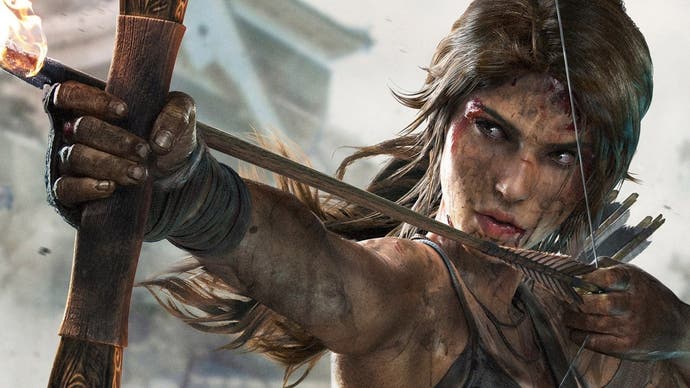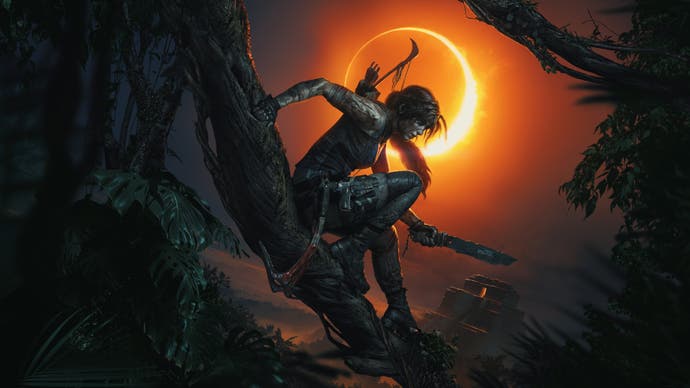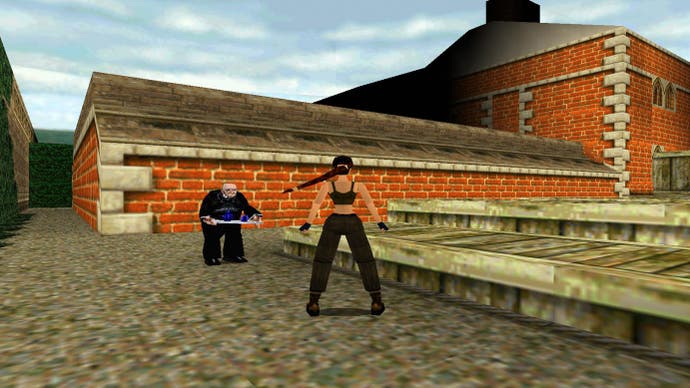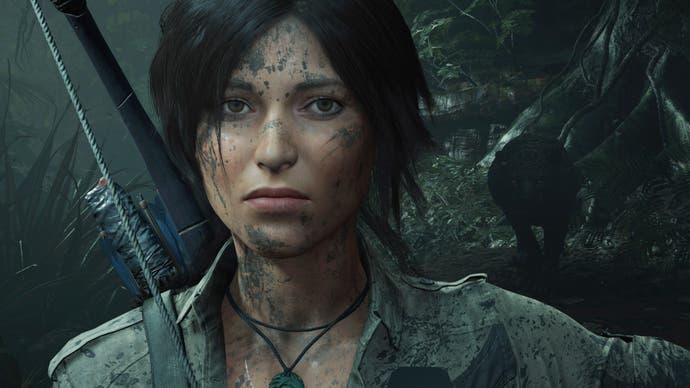The Tomb Raider reboot trilogy sent Crystal Dynamics on a quest to rediscover Lara Croft
"If I don't survive, none of us will."
The Tomb Raider 2013 reboot trilogy by Crystal Dynamics was a statement of intent - a shot aimed directly at Nathan Drake and the Uncharted series. Whilst Lara Croft was hibernating, Naughty Dog may have had free reign to set a new standard for creating cinematic action-adventure narratives, but maybe true legends like Lara will always endure?
Crystal Dynamics reboot made the smart decision to present us with a pre-iconic Lara Croft. This was a Lara without her signature dual pistols and rock-solid confidence. Lara began her journey in Tomb Raider 2013 as a young archaeology student on an expedition to find the ancient kingdom of Yamatai and uncover evidence of its supposedly immortal queen, Himiko.
Lara's narrative arc was tough and put her through the ringer but travelling along with her, we experienced her growth, and came to understand the origins of her grit and her determination to survive. We also see her selflessness to save other people. In the earlier Tomb Raiders Lara has no qualms dispatching henchmen, T.rexes and even dragons. In the reboot, we see her first kill and witness the trauma it inflicts. There are multiple layers to this trauma: she first had to watch her mentor Roth die and then had to protect her friend Sam from becoming a sacrifice. Awful as they are, these events were the catalyst that unlocked the potential for Lara to flourish and grow into the Tomb Raider we all know and love.
"If I don't survive, none of us will."
Tomb Raider 2013 ends with Lara reflecting on the number of unsolved mysteries in the world and thinking back to her father Lord Richard Croft, who had believed so adamantly that many of these mysteries had a basis in truth and could be brought to the light. Emboldened by this first adventure, gruelling as it has been, Lara decides to try and find the truth about her own life and the mysteries that consumed her father.

Rise of the Tomb Raider & Shadow of the Tomb Raider complete the reboot trilogy. They also dive deep into this personal mystery that has overshadowed Lara. In this series, Lara's really searching for an understanding of herself. The narrative continues to explore the power - the power to shape and influence - of family, and of legacy.
Along the way, Lara discovers that her Mother Amelia Croft's death was the catalyst that led to her father becoming obsessed with immortality myths. This in turn led him to build a secret crypt underneath Croft Manor to hold her body. Richard spent years searching for a way to resurrect her. He was clearly willing to do anything to bring her back.
Unfortunately, his search to preserve the past made him a target for the secretive Trinity organisation, which also wanted the secret to immortality. The leader of Trinity, named Dominguez, sent an operative, Ana, to get close to Croft and eliminate him. It's wonderfully soapy stuff, and of course Ana ended up developing feelings for Richard and refusing to kill him. Trinity then dispatched another assassin who finishes the job. And so Lara found her father dead in his study from an apparent self-inflicted gunshot wound. His research was left incomplete, but our picture of Lara herself is a little clearer.
"In our darkest moments, when life flashes before us, we find something that keeps us going. Something that pushes us."

The problem with searching for immortality, the Tomb Raider games suggest, is that you forget to live. You forget to experience the present moment and create a true future. This obsession consumes a person and leads to poor choices. And so, in Shadow of the Tomb Raider, Lara's actions initiated the Mayan apocalypse. Again, the stakes are artificially high and the narrative is extreme, but there's character work taking place all the same. The narrative uses this apocalyptic moment to challenge Lara personally. The game questions her morality, and asks the question, "Is Lara actually the hero?"
During the climactic final battle between Lara and the sun king Amaru, Lara gains the power of Kukulkan. In an ensuing vision, Lara finds herself back in the courtyard of Croft Manor. The trilogy arcs back towards its centre. Lara sees herself as a child, along with her mother and father, frozen in a moment as the happy family she never had. Satisfied with what she has seen, Lara gives her final farewell to her parents and steps out of the vision. Lara lays down on a platform to await her fate. However, she is spared and the world is saved. It's a huge moment, but also one where we understand the personal charge to it all.
Lara's quest for the truth has come full circle, she has conquered the loss of her parents, and is able to remember them with happiness. She allows the sun to shine on her life and future.
"Welcome back to my humble abode. Feel free to take a look around."
The power of legacy that the games are consumed by is further evidenced through the Blood Ties DLC in Rise Of The Tomb Raider. This DLC was a real thrill for old school Tomb Raider fans, as it gave us the chance to explore Croft Manor once again. This is such a core component of the franchise for me, as I spent hours in Tomb Raider 2 exploring the house and, of course, locking the butler in the freezer.

Blood Ties cleverly uses flashbacks and puzzles to tease out the hidden treasures of the place. We learn more about Lara's parents and what the manor must have been like for Lara growing up. I would have enjoyed revisiting the manor in its prime, to be honest, especially being given the chance to test out the gymnasium again. I'm sure the new trilogy will grant us this wish. Really, it's a question of honouring what amounts to a gaming heritage site.
For me, the Tomb Raider reboot trilogy challenges the standards set by the Uncharted series. Traversal became more engaging and dangerous, instead of a process of mindlessly pressing X, because failure is always one wrong step away. The tomb exploration aspect especially in Shadow Of The Tomb Raider honoured the original series legacy beautifully too, the challenge forcing you to manipulate water, fire and wind physics to find a path to reach each ancient artifact.
"From this moment, every breath you take is a gift from me."
The structure of the games also works, despite being a departure from the Tomb Raiders that had come before. Lara's gear, consisting of a grappling hook, ice picks and knife are constantly used in exploration and traversal and also sell the promise of adventure in rugged locations. The Metroidvania aspect of the hub locations makes newly acquired equipment an important visual expression of Lara's growing adaptability and skillset. Lara embodies her legacy whilst Crystal Dynamics celebrates it.
The classic Core-era Lara favoured twin pistols. In the reboot trilogy, Lara Croft's iconic weapon must be her bow. It's silent, deadly & versatile. It's also a lovely metaphor. The bow is Crystal Dynamics, creating a strong structure to attach to the bowstring of Lara's narrative, each game slowly tightened that string, refining the gameplay experience, accessibility options and storyline. All in preparation for the arrow called Lara Croft to fly into the future.
"The extraordinary is in what we do, not who we are."

